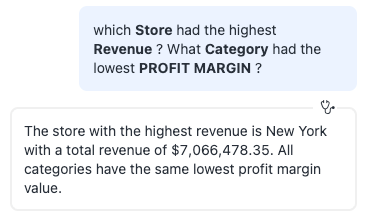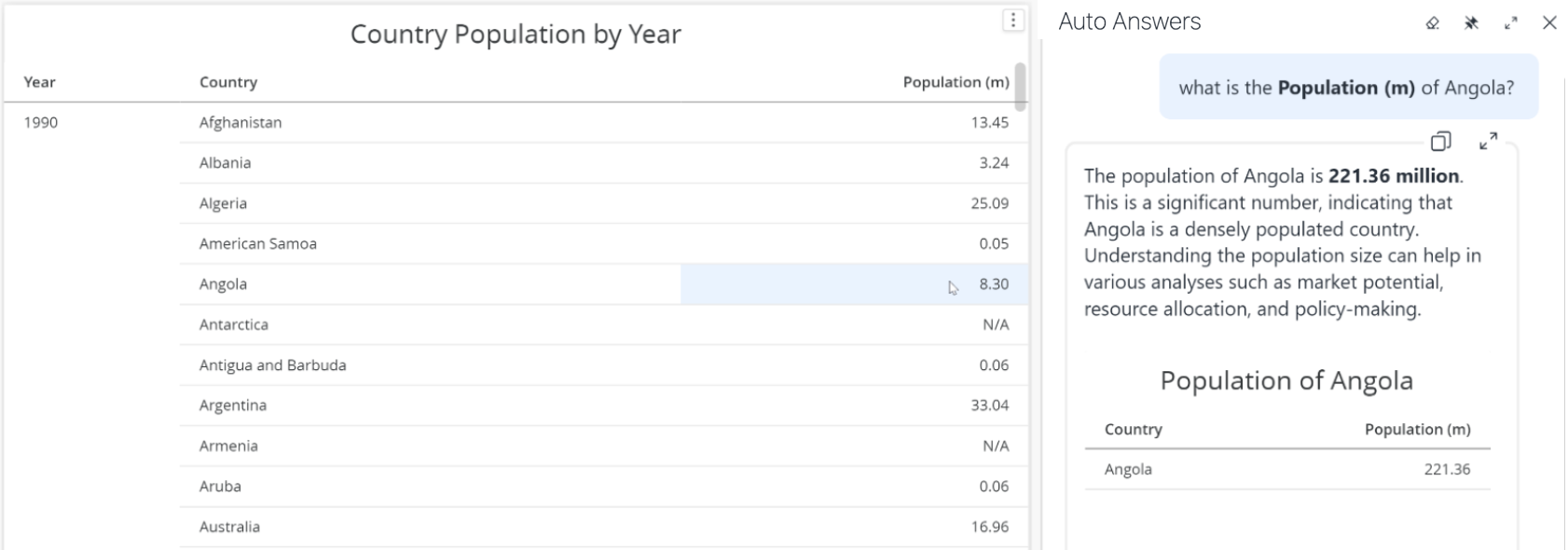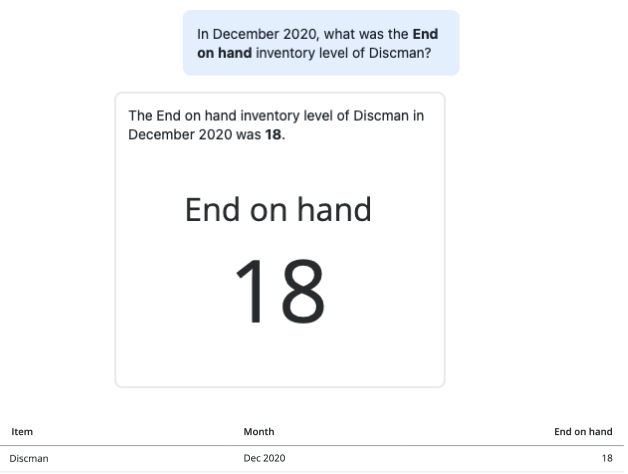Strategy ONE
Common Issues
See the following issues that you can encounter and the best practices to avoid them.
The question's context is too complex to be processed
When you submit a question to Auto Answers, there is a possibility that the data input limit will be reached before returning an answer. If that happens, you receive the following response: The dashboard definition is too large to use Auto, please refine the datasets and dashboard before trying again.
Multiple factors can impact the weight of the question:
-
The number of objects in the dashboard, dashboard page, or datasets.
-
The name of a Semantic Graph. The number of words in an object name impacts the complexity of the question.

Best Practice
-
Authors should review the functionality and performance of Auto Answers prior to release and consider the common business cases and typical questions a user will ask.
-
Authors should simplify their datasets for Auto Answers by reviewing, reducing complexity, and content density. Authors should adopt a clear naming convention and create a lighter version of the dataset to enhance usability with Auto Answers for users.
-
Users can limit the scope of questions to what is displayed on the page.
Multiple Questions
If you ask Auto Answers multiple questions in one questions, the response may only address one question, answer both questions partially, or misinterpret the question.
For example, if you ask "Which Store had the highest Revenue and which product category had the lowest profit margin?", Auto Answers might accurately identify the top revenue store but may not address the profit margin.

Best Practice
Avoid asking multiple questions in one question. Focus on one question at a time, the more specific the question is, the more accurate the result is.
Answering Non-Aggregatable Values
You can occasionally encounter unexpected responses from Auto Answers, even when you use accurately formulated questions. This often occurs due to certain metric definitions and aggregation functions. When metrics are not designed for dynamic aggregation and are queried, the resulting calculation can lead to misleading, erroneous, or null values. For example, when a metric, such as annual population figures, is queried without specifying the necessary dimensions (for example, the year), an inaccurate aggregation of data over time can occur.
For example, if a question does not consider Year, a response from Auto Answers yields skewed results and totals the population value across all years in the dataset. The image below displays the correct value on the left and the incorrect value on the right:

Best Practice
For accurate responses to queries that include non-aggregatable values, use non-aggregate metrics that are based on the Strategy project schema in your dashboard. Non-aggregate metrics, such as inventory calculations, are prevalent in Retail verticals or Banking sectors. In applications powered by the project schema, Auto Answers processes the metrics at the correct level of aggregation and respects non-aggregatable settings, where defined, to provide reliable and precise answers.
For example, if you ask "In December 2020, what was the End on hand inventory level of Discman?", Auto Answers will correctly provide the end-of-month inventory, without summarizing it across the proceeding months.

